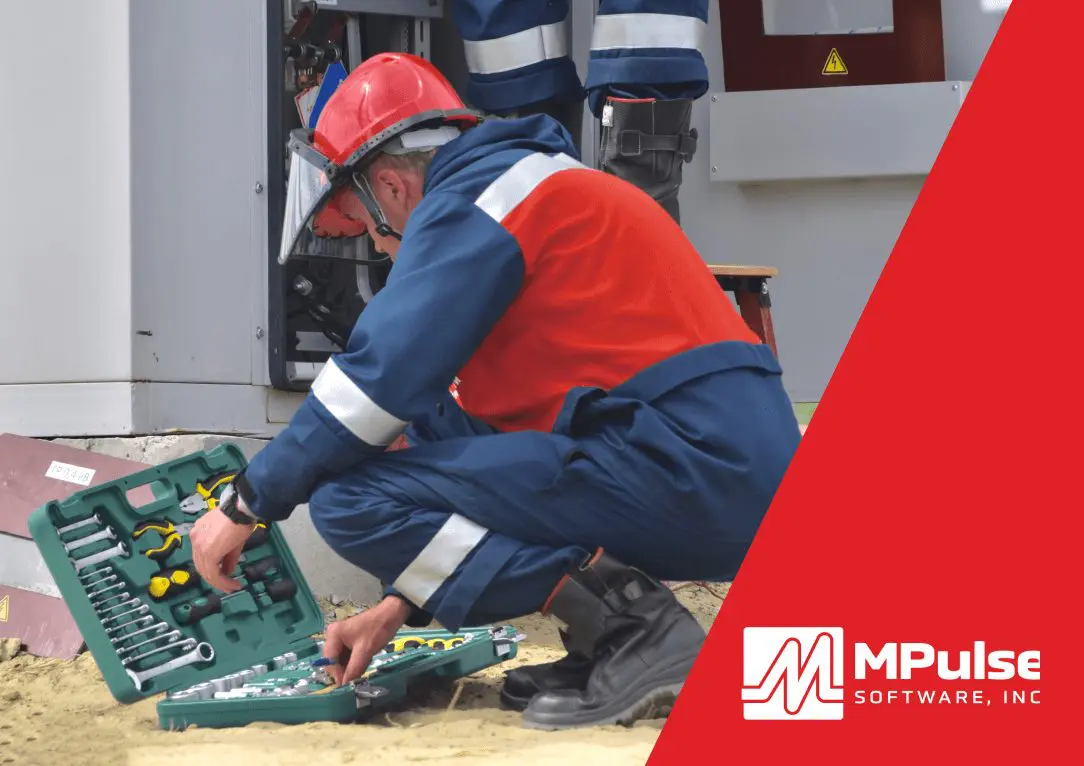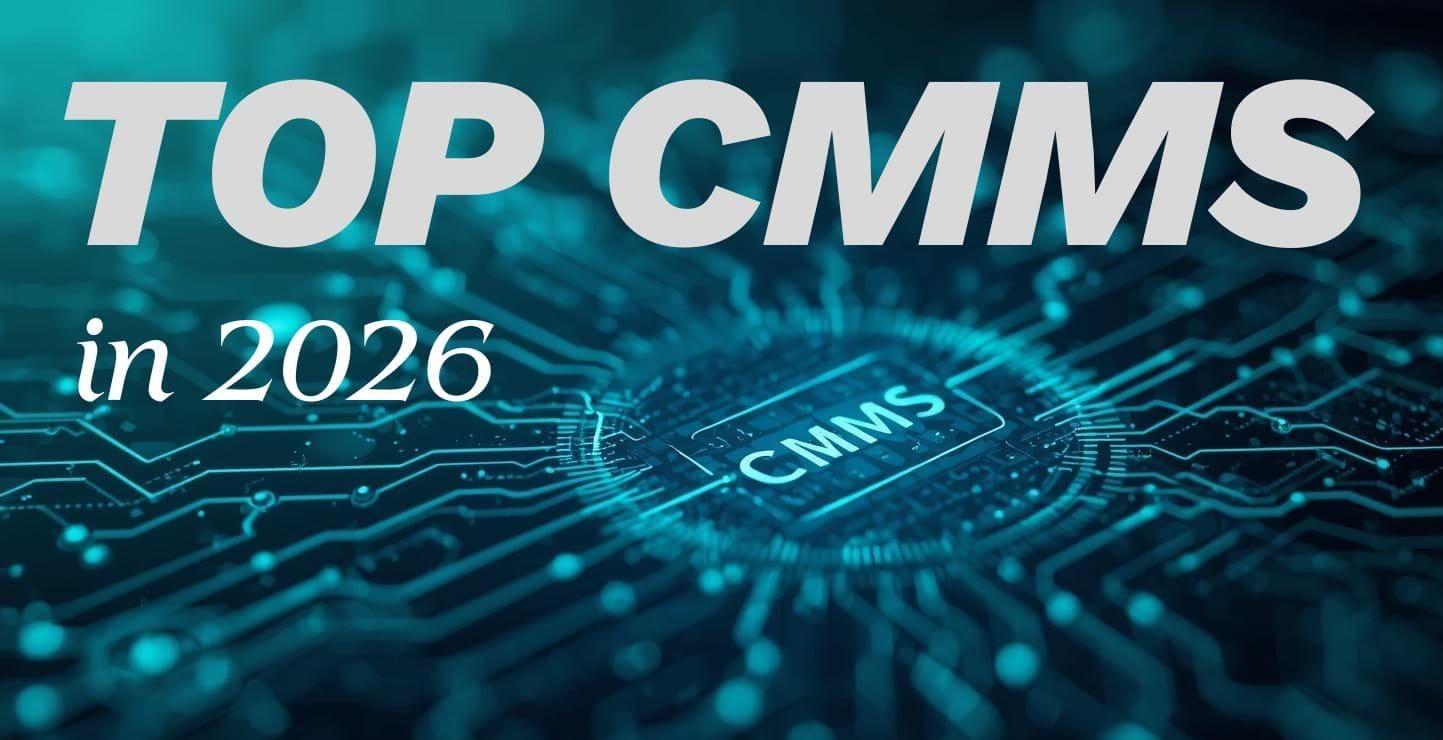If you haven’t researched CMMS software lately, you might be surprised at how much things have changed. Maintenance software consistently gets more powerful—and more flexible—while also often becoming more affordable.
So, how do you know when it’s time to upgrade your CMMS software? Look for one of these ten signs.
Table of Contents
Sign #1: Your Organization Has Grown
When your organization grows, maintenance feels the impact. Suddenly you’ve got more equipment to maintain, additional production to support, new staff members to manage, extra inventory to store, and different safety procedures to perform.
Software scalability means your CMMS can accommodate changes in size or volume as needs change. Whether it’s a larger staff, better internal efficiency, or better integration, you want software that can fit your needs today—and tomorrow.
Sign #2: You Need More or Better Data
CMMS software can help reduce operational costs by using detailed tracking tools for financial and business metrics. Some even offer cost center budgeting tools. If your current software is weak in this important area, that alone could justify an upgrade.
CMMS software allows you to collect and report on data across your entire asset inventory, providing numerous measures to help you make better decisions and answer business-critical questions. That includes data on…
- Labor costs
- Parts costs
- Energy costs
- Purchase price and date
- Life expectancy
- Warranty information
- Replacement costs
- Other custom data
Additionally, many contemporary CMMS solutions like MPulse allow you to connect to meters and gauges directly, eliminating the need for meter readings and manual data entry.
Sign #3: You Need User-Friendly Software
Time is money, so if it takes more than a few shifts for someone to learn the ropes on your current software, you’ll save big bucks with a modern, user-friendly CMMS. It’s all about the user interface (UI).
With the right UI, all your users can get the job done faster. Look for these features:
- A simple, intuitive layout that maps data quickly.
- A “set it and forget it” scheduling feature.
- Comprehensive compatibility with other data stores. At the very least: Excel, .csv, .txt, SQL Server, and XML Web Services.
Sign #4: Your Team Uses Mobile Devices
Mobile technology is a natural fit for maintainers. With smartphones and tablets, you can capture information on the spot—instead of jotting it down on paper to be input later. The explosive growth of mobile technology is being matched by growing bandwidth and better access to it. You can now connect to the Internet, and virtually any business application, from almost anywhere, via Wi-Fi or cellular connection.
CMMS allows you to access critical information easily without calling back to the office or getting “plugged in.” Imagine your staff being able to do these activities from anywhere:
- Open, access, and complete work orders
- Send or upload photographs of failed components
- View available parts inventory
- Access historical data on assets
- Get up-to-the minute alerts and reports
- Update inventory using barcode scanning and online ordering systems
- Access maintenance and repair manuals
- Record locations automatically with a GPS-enabled device.
Sign #5: You Need to Keep Data Secure
CMMS data is an organizational asset, and it needs to be protected like any other asset. You don’t hand the keys to your office over to just anyone—and you don’t want unauthorized access to your CMMS software either.
Modern CMMS software can help you achieve that goal. For example, MPulse’s single sign-on (SSO) option extends an organization’s internal Microsoft Active Directory to the MPulse cloud environment. This feature supports multiple identity providers (including Microsoft ADFS and Okta) as well as user self-provisioning and custom claims for populating user data. MPulse supports SAML SSO, enabling its cloud-based CMMS software to integrate with security directories that determine who gets access to what computers, networks, applications, and services. No other third parties are required.
Modern CMMS applications also incorporate easy-to-manage security controls to ensure the right people—and only the right people—have access to the right information. Features like MPulse Role-Based Access Control were designed for this purpose—enabling you to reduce errors in data entry, prevent unauthorized users from viewing or editing data, gain tighter control over data access, and eliminate the “data clutter” of unnecessary information.
Sign #6: Your Customers Are Asking for New Features
The service request management features in most modern CMMS applications allow requesters to monitor the progress of maintenance requests as you update and complete repairs. Empower them, and their trust and confidence in your team will grow.
The approval system automatically filters maintenance requests based on your predetermined criteria. Then the software quickly routes them to the appropriate people for review and approval. It’s easy to configure and provides the powerful features you need:
- Directs maintenance requests to the approvers you designate
- Lets approvers take action, append notes, and make comments on requests
- Provides email notification of approval status
- Gives easy access to approval status and comments
- Includes multiple custom filters, fields, and options
- Saves a permanent record of request approval details.
Sign #7: Your Preventive Maintenance Schedules are Complicated
Preventive maintenance (PM) scheduling keeps your assets working and prevents expensive downtime. If your current system makes scheduling difficult, you’re missing PMs—count on it. A modern system will make scheduling easier and help you avoid costly failures.
Setting up a PM tracking routine helps prevent the need for more costly repairs. Benefits include:
- Automated PM tasks schedules that make it simpler to follow the manufacturer’s guideline
- Reduced emergency maintenance issues and unexpected production stoppages
- Lower overtime costs for emergency repairs and production losses
- Decrease in more serious problems and more expensive maintenance that arise as a result of neglect
- Established schedules that ensure equipment is properly calibrated and lubricated
- Elimination of lost information between shifts, reducing confusion and errors
- Automated schedules for both employees and contract workers
- Improved equipment and asset reliability
- Streamlined compliance reporting
Sign #8: You Need to Integrate with Other Business Software
While CMMS software holds clear advantages for the maintenance team, other departments can benefit as well. And, expanding software across departments is probably easier than you think. New data integration tools make integrating software across departments possible for a CMMS to share and receive data with other applications. Now you can easily link CMMS with other systems, such as ERP and accounting software, predictive maintenance monitors, building automation systems, and more.
MPulse DataLink Integration Adapter can meet virtually any data integration need, because it’s compatible with a wide array of file and data exchange formats. For example, you might want to integrate MPulse with spreadsheets, other databases, ERP systems, accounting systems, PLCs, electronic meters, and more.
Sign #9: You Need to Improve Inventory and Parts Management
CMMS software streamlines your reordering process, helping you make sure the right parts are on the shelf, yet minimizing other parts that customers use less frequently. You can determine your current inventory levels and automatically generate purchase orders based on need, reducing purchasing overhead. You also can set reorder points, which calculate your average daily usage rate by the part’s lead time in days. CMMS software also can help you track shipments, vendor performance and warranty information.
CMMS software can automate cyclical inventory counts, reducing the man hours needed and ensuring the parts or materials in the system are actually sitting on the shelf or in the parts bin. Combining the inventory process with CMMS software also enables you to identify parts for obsolete equipment and track inventory loss or shrinkage. Barcoding your inventory harnesses the power of CMMS software with easy-to-use technology. You can scan parts during inventory, then sync to the CMMS—a huge time saver.
Sign #10: You Want to Work in the Cloud
Cloud computing technology has revolutionized the CMMS software industry by helping organizations of all sizes achieve faster implementations, reduce internal IT needs, and improve reliability. Cloud-based maintenance system computing also provides a broader range of payment options. Now it’s easier than ever for companies to afford CMMS software for their maintenance teams.
Maintenance software hosted in the cloud helps maintenance operations get applications up and running faster while reducing onsite implementation and management costs. By virtually eliminating the need for highly trained, expensive internal IT teams, the biggest skill barrier to implementing CMMS is removed. Your maintenance team will save time and money getting your CMMS system working—and you’ll be able to get on to the real work of maintaining and repairing critical assets.
A proactive upgrade—one that meets your company’s unique requirements—can save more time and money than you think. Work order management is the heart of MPulse Software’s CMMS solutions. We help you get the highest priority work done, while making sure lower priority work doesn’t slip through the cracks. Find out how. Contact us.






